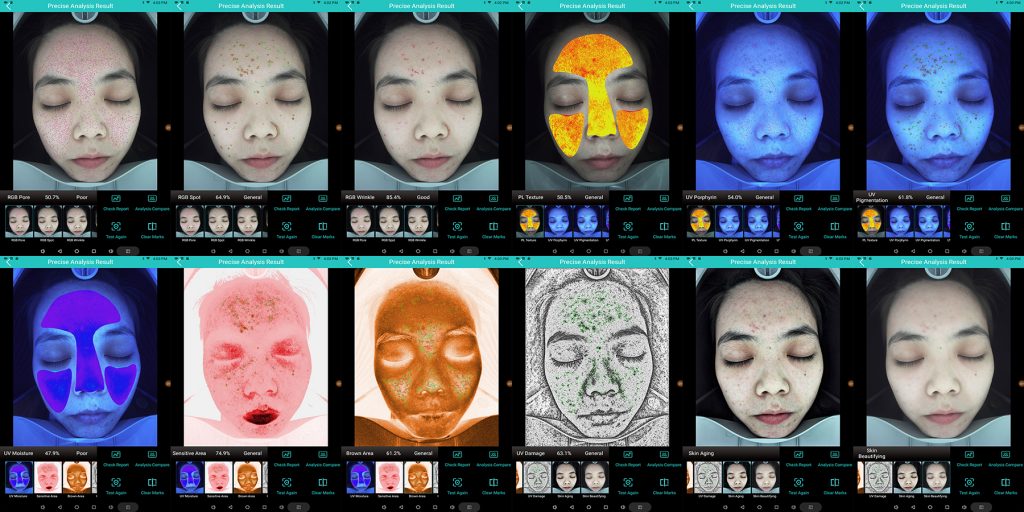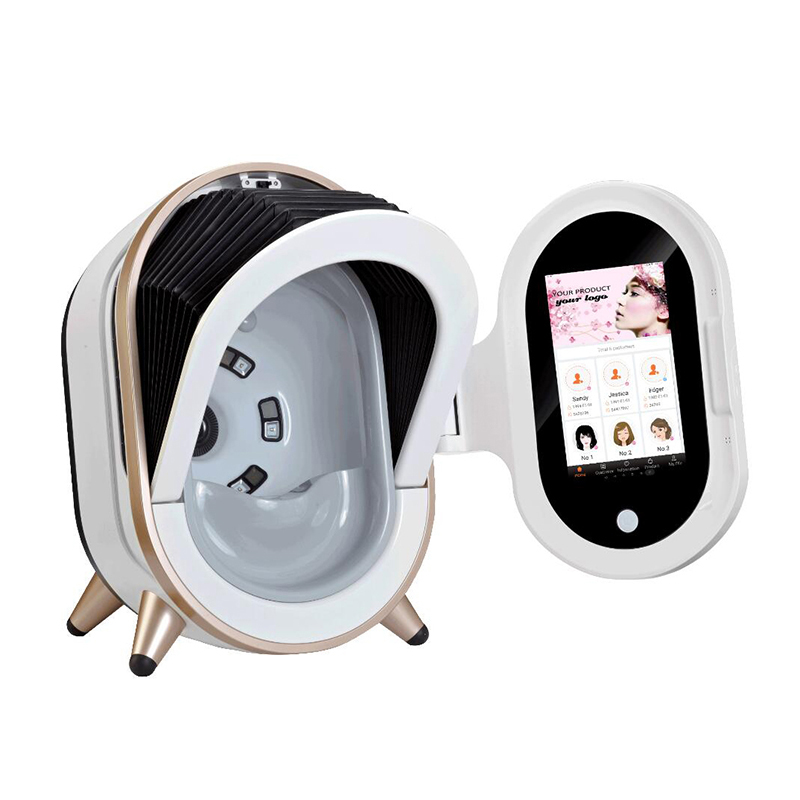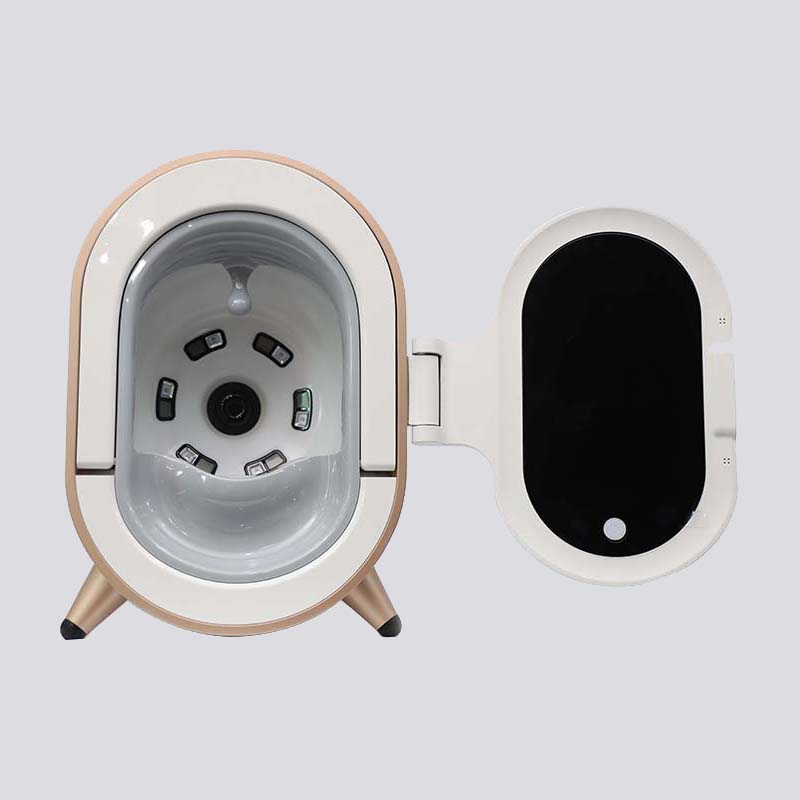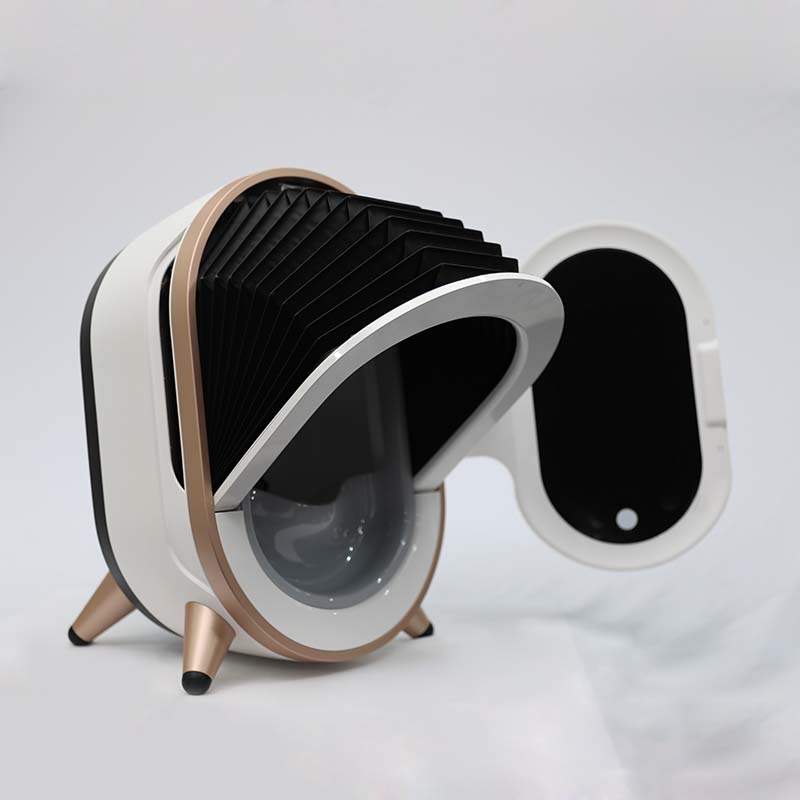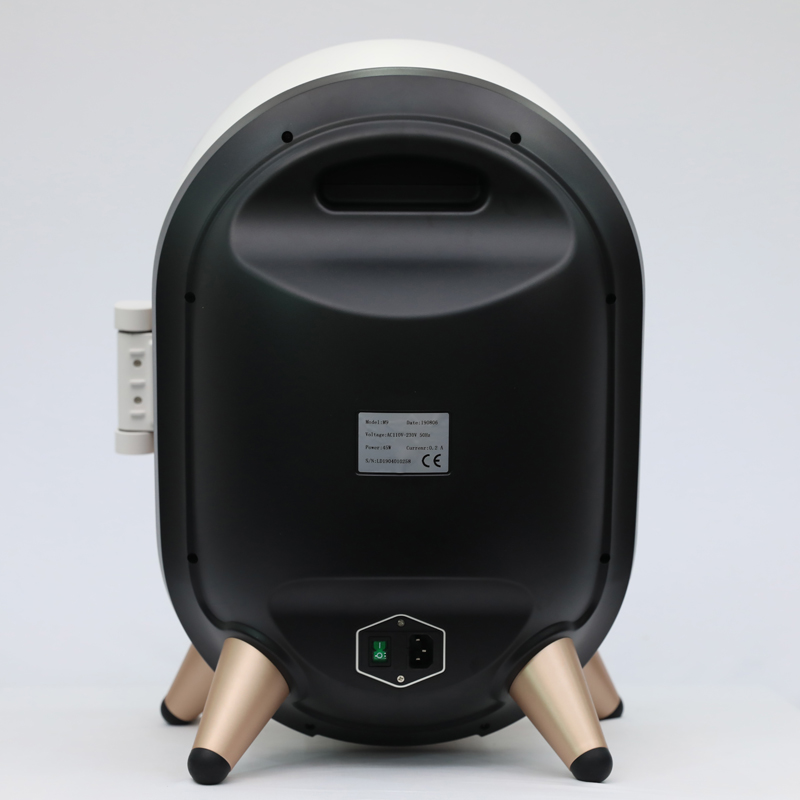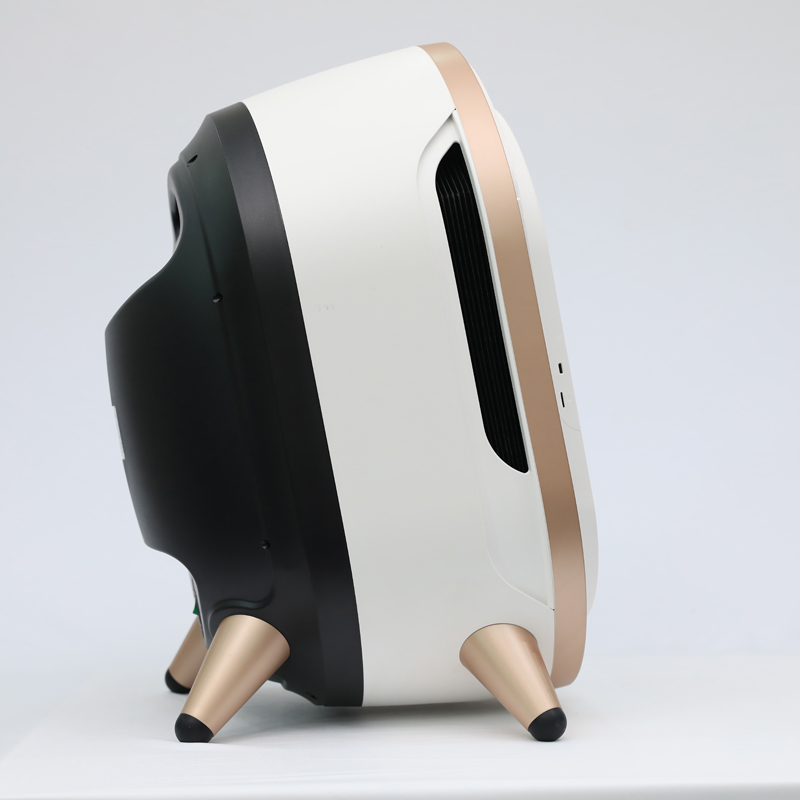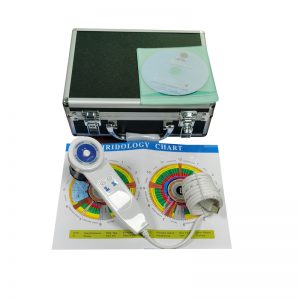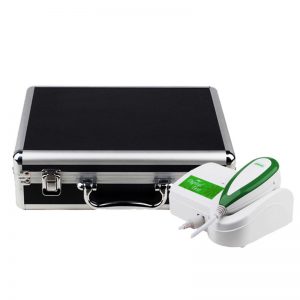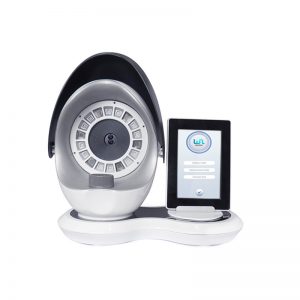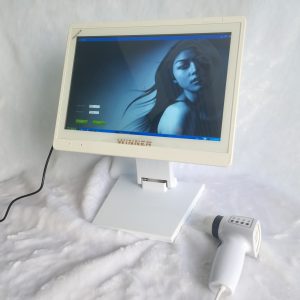With the help of artificial intelligence technology, we can see the surface skin problems in the deep skin by comparing with the sunlight pictures. Also, 3D perspective technology can be used to magnify the skin from the surface to the deep layer, so that more skin details can be seen, especially the superficial collagen and moles.
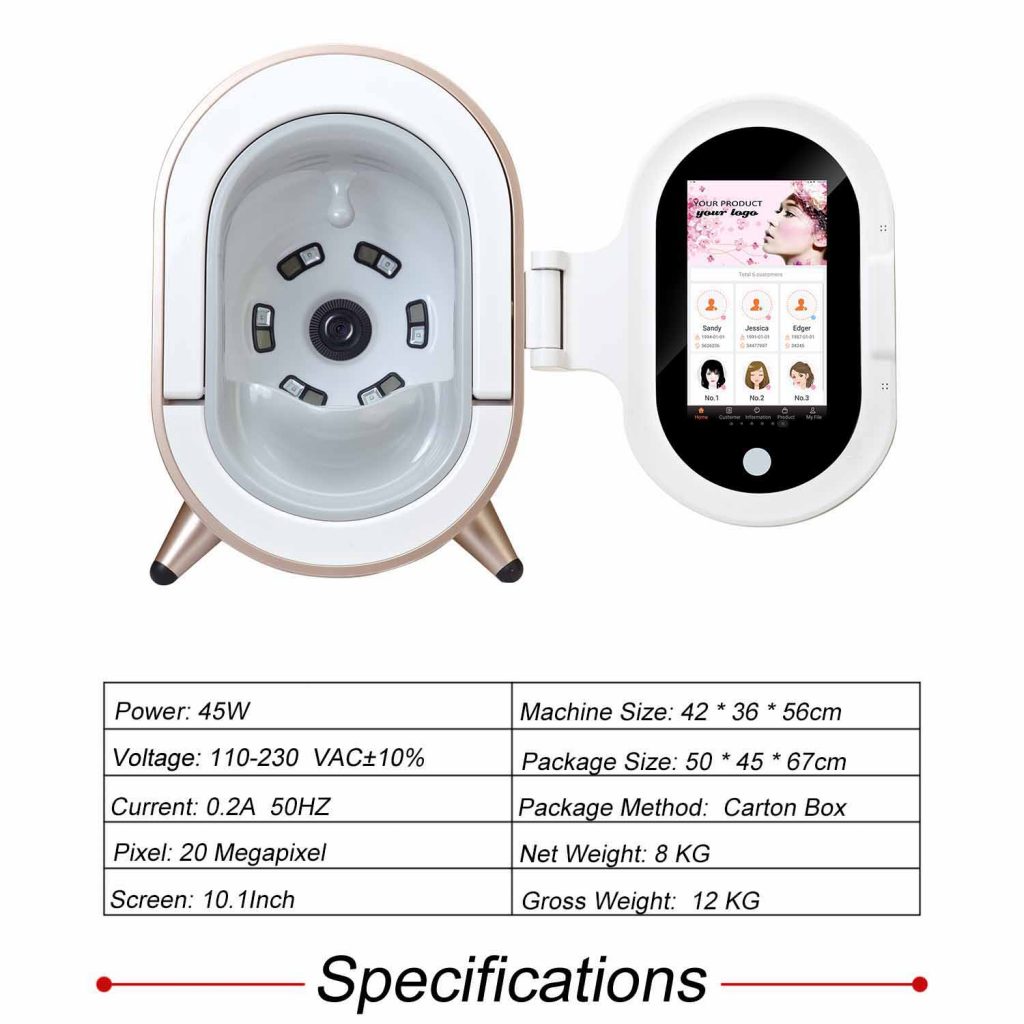
Features:
1) Android platform system, more intelligent and convenient.
2) RGB+UV+PL 3 spectrums, scan images in normal, polarized, and UV lighting.
3) Automatic face recognition technology.
4) Accurately analysis 10 skin problems from epidermis and dermis.
5) Skin aging and skin beautifying to show the skin condition in next 3-5 years.
6) Wi-Fi transfer database, Cloud storage, bath database management.
7) 30 million clinical database, based on large data, combines with artificial intelligence and image analysis, analysis more accurate, 20 seconds rapid analysis, time-saving and efficient.
8) Advertising display on the home-screen automatically.
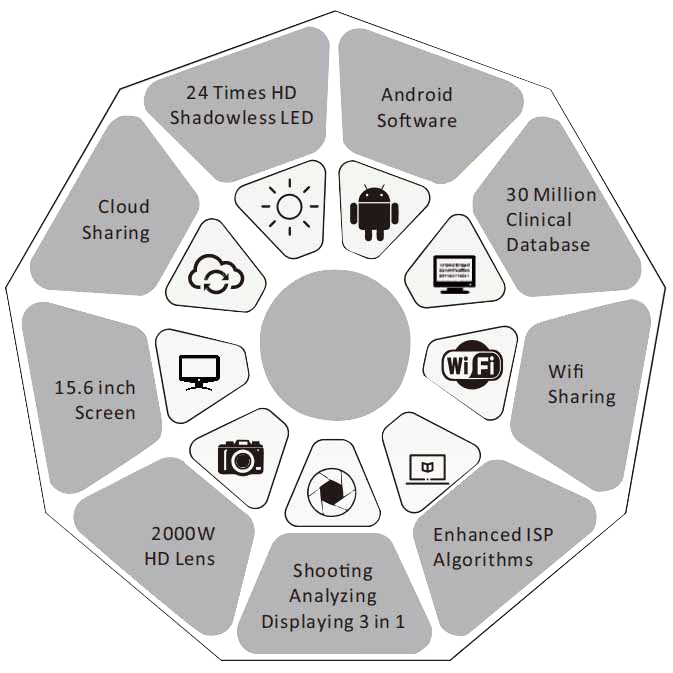
A skin analyzer is a device or tool used to assess and analyze the condition of the skin. These devices are often employed in skincare clinics, spas, and beauty centers. The primary goal of a skin analyzer is to provide a detailed evaluation of various skin characteristics, allowing skincare professionals to tailor treatments and skincare routines to individual needs. Here are some common features and aspects that skin analyzers may assess:
Moisture Levels: Analyzing the hydration levels of the skin is crucial for determining its overall health. Skin analyzers often measure the amount of moisture present in the skin to assess hydration.
Oil Content: Some devices can measure the oil content of the skin. This information is useful in developing skincare routines, especially for individuals with oily or combination skin.
Elasticity: Skin elasticity is a measure of how well the skin can stretch and return to its original state. Reduced elasticity is a common sign of aging.
Pigmentation: Skin analyzers may assess pigmentation irregularities, such as dark spots or hyperpigmentation. This information helps in recommending treatments for an even skin tone.
Wrinkles and Fine Lines: The appearance of wrinkles and fine lines is often analyzed to evaluate the aging process of the skin.
Pore Size: Some devices can measure the size of pores, which can be useful in addressing concerns related to enlarged pores.
UV Damage: Skin analyzers may assess the impact of UV radiation on the skin. UV damage is a significant factor in premature aging and other skin issues.
Texture: Analyzing the texture of the skin helps in identifying rough patches, smooth areas, or uneven surfaces.
